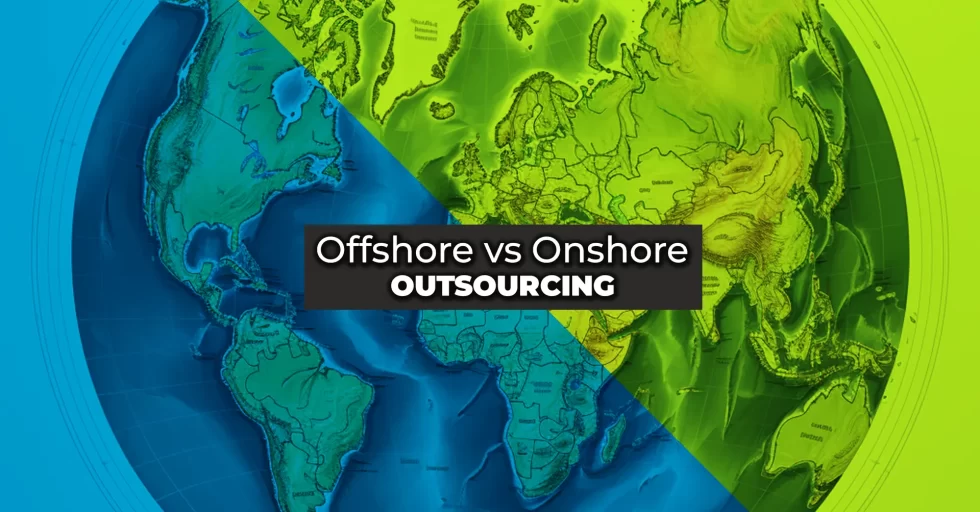Outsourcing has become a cornerstone in the business world, allowing companies to tap into specialized services and concentrate on their core competencies. One crucial aspect of outsourcing, particularly in the realm of customer support, is the choice between offshore and onshore call centers. This decision can significantly impact a company’s operations, costs, and customer satisfaction. Let’s embark on a journey through the intricacies of navigating outsourcing options, focusing on the key differences between offshore and onshore call centers.
Outsourcing has evolved into a strategic business practice, with call centers playing a pivotal role in ensuring customer satisfaction. In this article, we will delve into the complexities of choosing between offshore and onshore call centers, exploring various factors that businesses need to consider.
Understanding Offshore Call Centers
Offshore call centers, often located in countries with lower labor costs, have become a popular choice for businesses looking to cut operational expenses. The advantages are clear: reduced labor costs, 24/7 service availability, and a diverse talent pool. However, challenges such as language barriers and cultural differences must be carefully navigated.
Exploring Onshore Call Centers
Contrary to offshore options, onshore call centers operate within the same country as the hiring business. While costs may be higher, the benefits include cultural proximity, linguistic alignment, and a more straightforward management process. Nonetheless, onshore call centers face challenges related to labor expenses and potential scalability issues.
Comparing Cost Factors, Offshore Call Center’s Lower Costs
Cost considerations are a critical factor in the outsourcing decision. Offshore call centers typically offer lower labor costs, making them an attractive option for businesses looking to optimize expenses. On the other hand, onshore call centers may demand a higher financial investment, but the advantages of local expertise and easier communication can offset these costs.
Quality of Service
Service quality is paramount in the outsourcing landscape. Offshore call centers often face scrutiny regarding language proficiency and cultural nuances, impacting customer interactions. Meanwhile, onshore call centers boast a more natural understanding of local markets and customer expectations, potentially leading to higher service quality.
Cultural Considerations
Cultural differences can significantly influence the success of outsourcing ventures. Offshore call centers, situated in distant locations, may struggle to align with the cultural expectations of the hiring company and its customers. In contrast, onshore call centers benefit from shared cultural values and norms, enhancing the overall customer experience.
Language Proficiency
Language proficiency is a key consideration, especially in customer-centric operations. Offshore call centers may encounter challenges in maintaining high language standards, leading to potential miscommunication. Onshore call centers, operating within the same linguistic environment, generally offer superior language proficiency, reducing the risk of communication gaps.
Time Zone Differences, Offshore Call Center’s Compromise
Navigating time zone differences is a common challenge in offshore outsourcing. Businesses must ensure seamless communication and support, irrespective of geographical distances. Onshore call centers, being in the same time zone, can provide real-time support and eliminate concerns related to delayed responses.
Security and Compliance
Security and compliance are critical in industries handling sensitive information. Offshore call centers may face skepticism regarding data security, as regulations and practices vary globally. Onshore call centers, subject to local regulations, often provide a more secure environment, ensuring compliance with data protection standards.
Scalability and Flexibility
The ability to scale operations swiftly is essential for growing businesses. Offshore call centers, equipped with large and diverse talent pools, offer scalability advantages. However, onshore call centers, while potentially facing challenges in scaling, provide greater flexibility in adapting to specific business requirements and changes in demand.
Technology Infrastructure
Technological infrastructure is a key determinant of operational efficiency. Offshore call centers may invest heavily in advanced technologies to stay competitive. Onshore call centers, operating in familiar technological landscapes, can seamlessly integrate with the hiring company’s systems, promoting smoother collaborations.
Case Studies
To illustrate the practical implications of outsourcing decisions, let’s explore a few case studies. We’ll examine companies that have successfully utilized offshore call centers to achieve cost savings and those that have thrived with onshore call centers, emphasizing the importance of aligning outsourcing choices with business goals.
Making the Decision
Choosing between the two call centers requires a meticulous evaluation of various factors. Businesses must weigh the pros and cons, considering their specific needs, budget constraints, and long-term objectives. A well-informed decision ensures a strategic outsourcing partnership that contributes to overall business success.
Future Trends
As technology evolves and business landscapes change, outsourcing trends continue to shift. Keeping an eye on emerging trends is crucial for businesses planning their outsourcing strategies. Whether it’s advancements in artificial intelligence, enhanced customer engagement tools, or new models of outsourcing, staying ahead of the curve is essential for maintaining a competitive edge.
In the ever-evolving landscape of outsourcing, the choice between offshore and onshore outsourcing partners remains a pivotal decision for businesses. By understanding the nuances of each option and aligning them with specific business goals, companies can establish successful outsourcing partnerships that drive efficiency, customer satisfaction, and overall growth.





